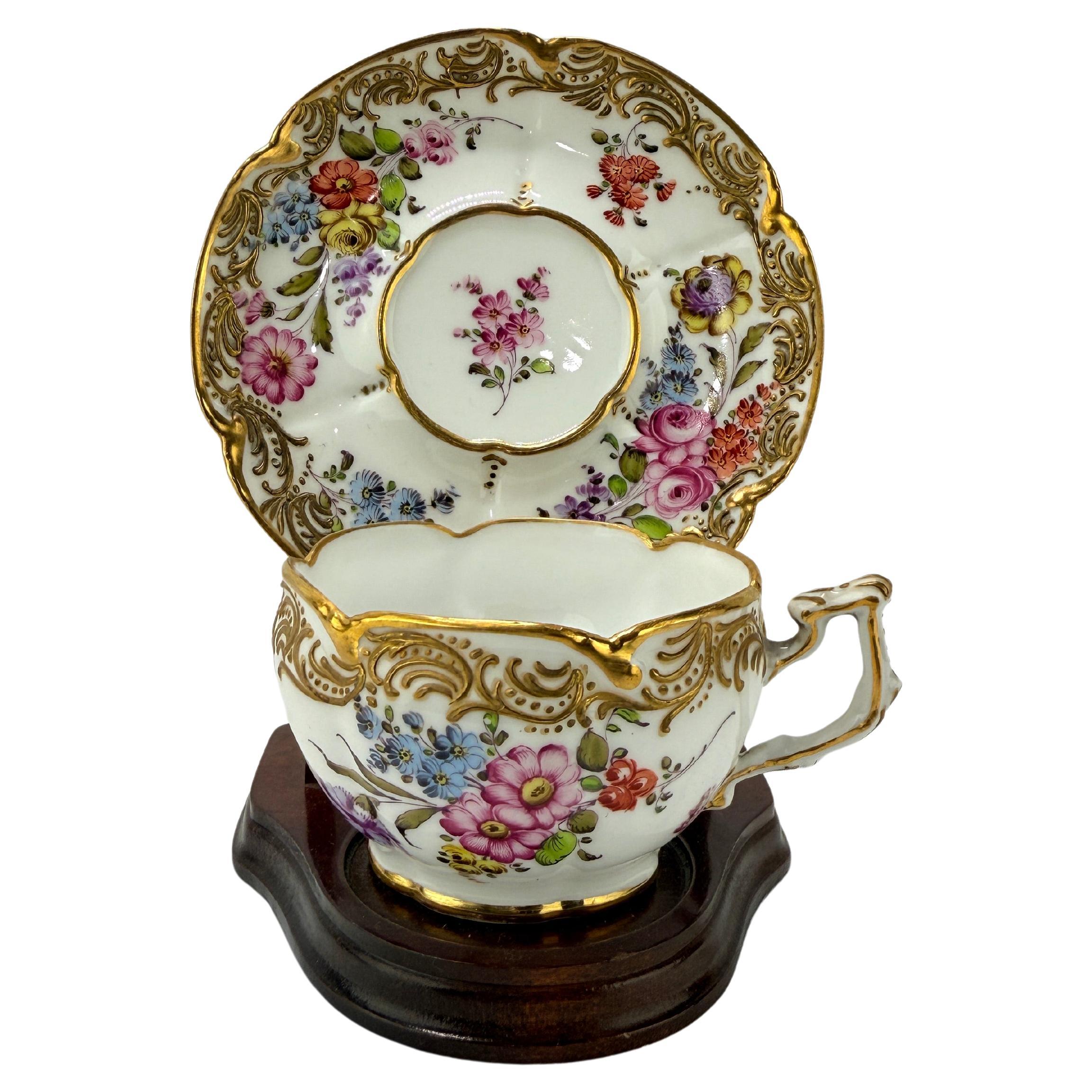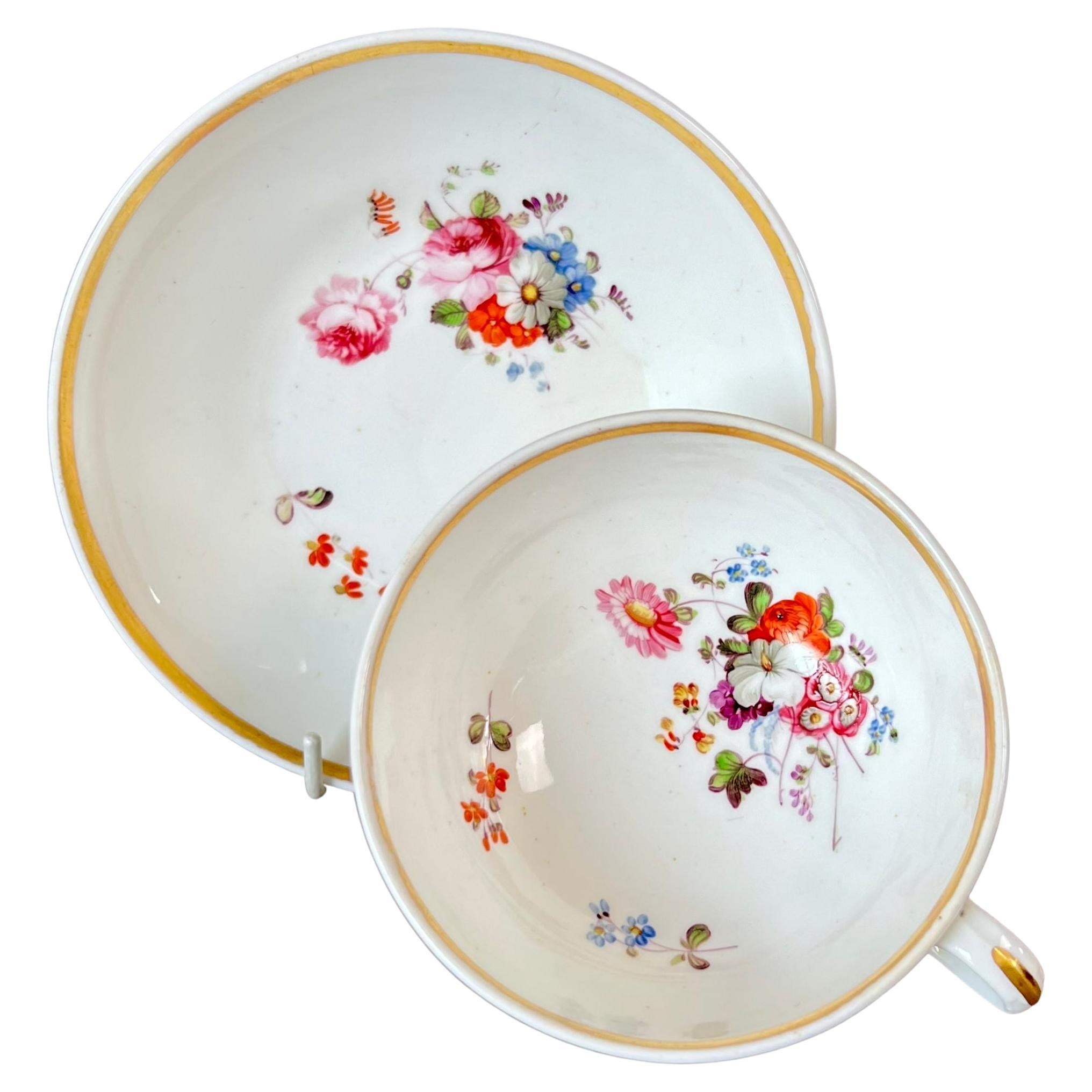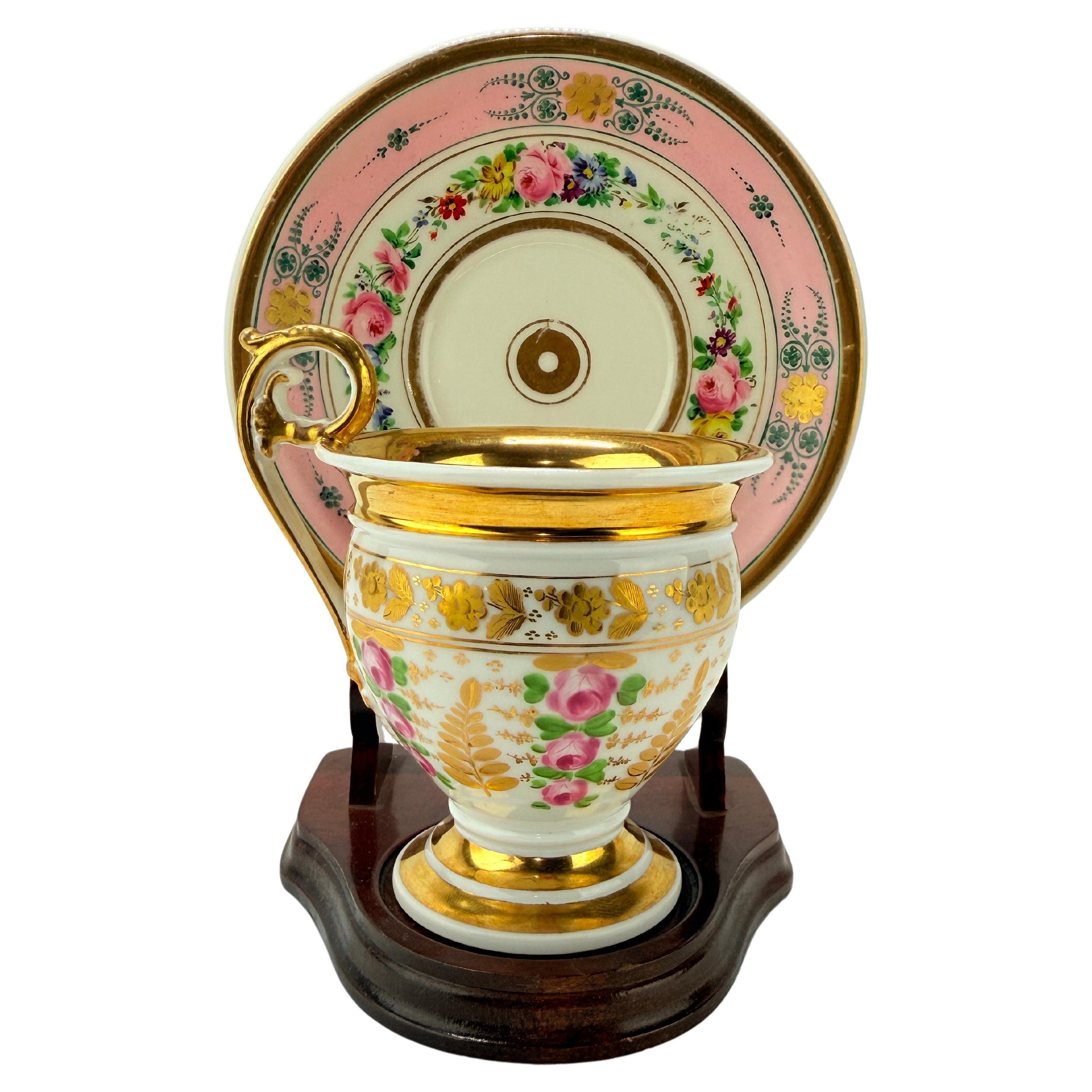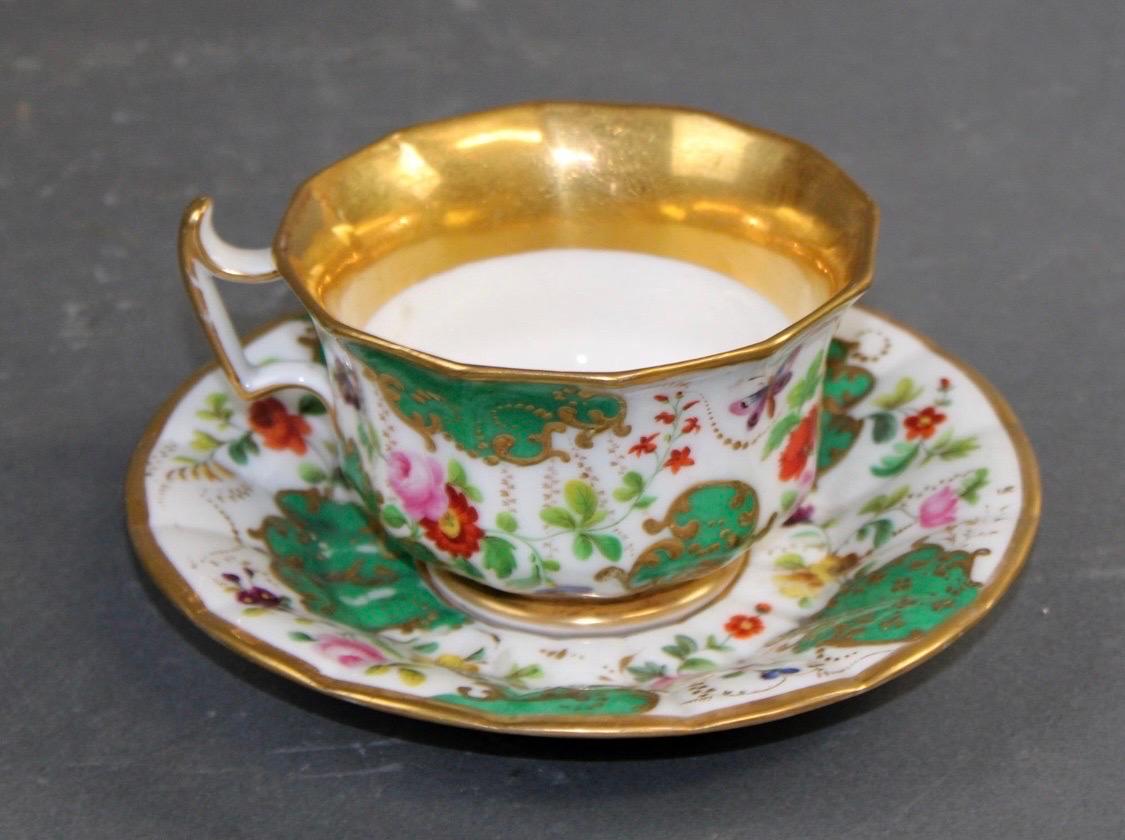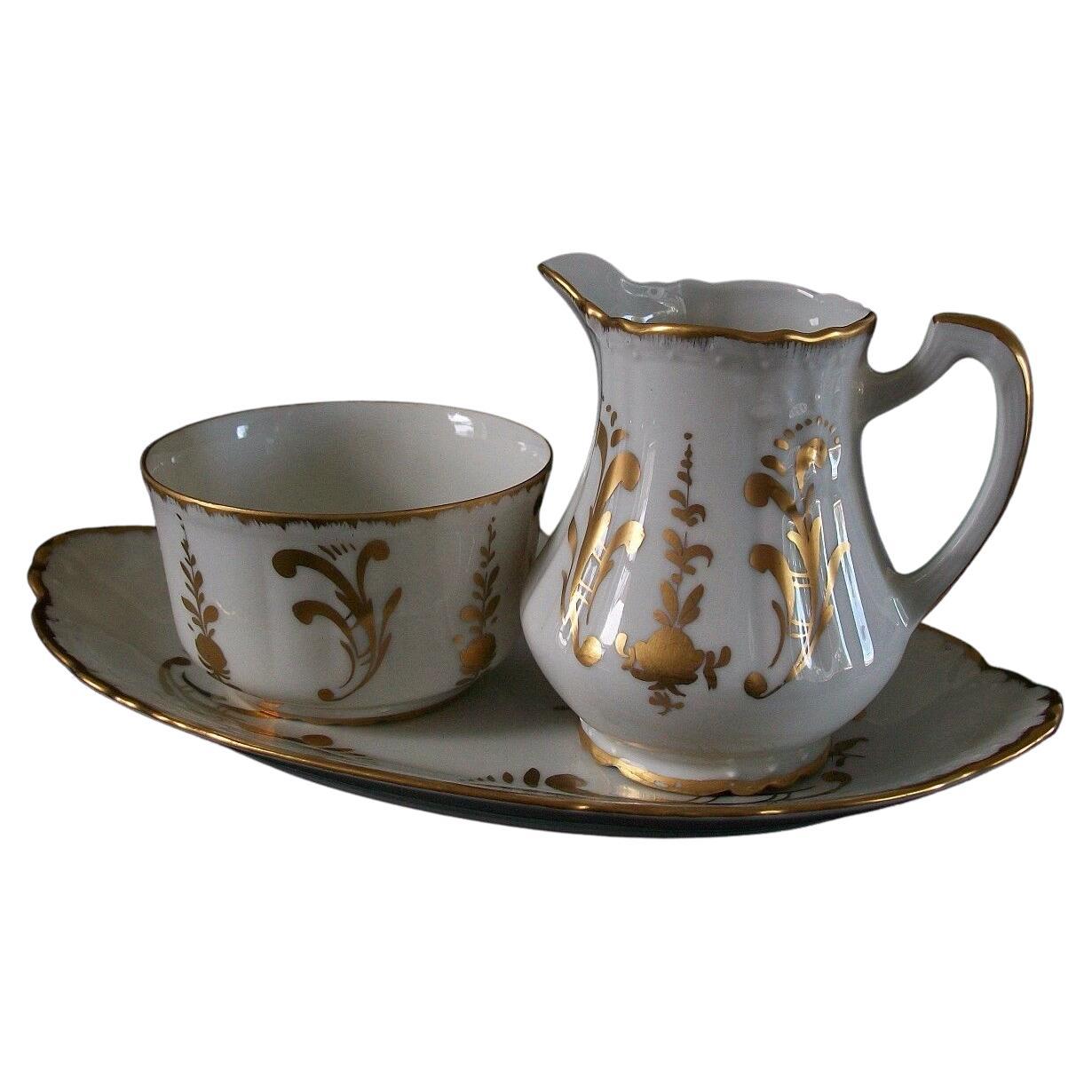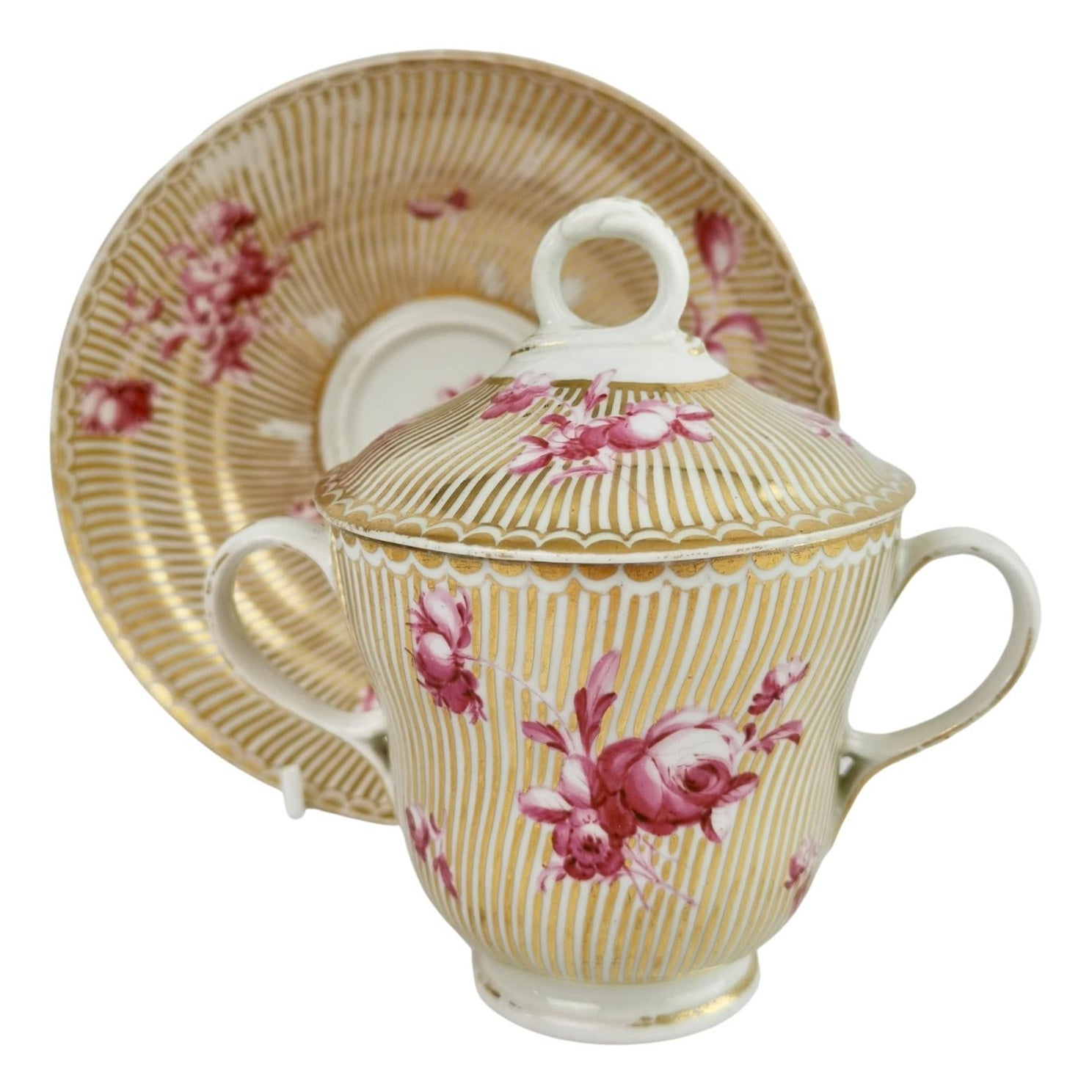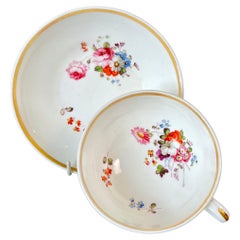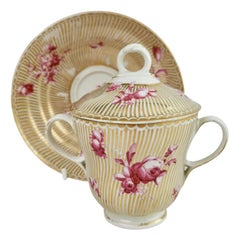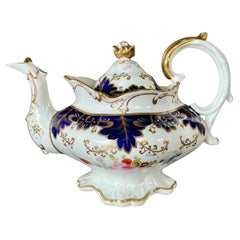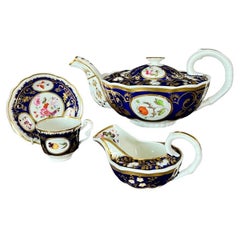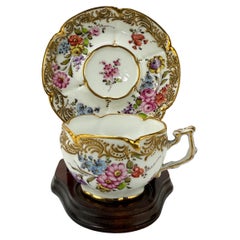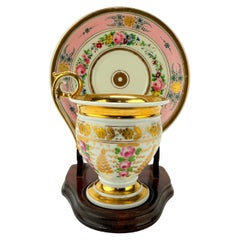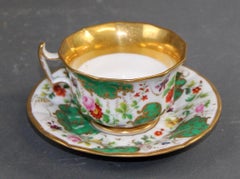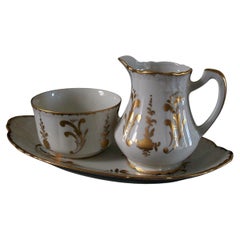Items Similar to Samuel Alcock Teacup and Milk Jug, Pale Yellow, Gilt and Flowers, ca 1824
Want more images or videos?
Request additional images or videos from the seller
1 of 20
Samuel Alcock Teacup and Milk Jug, Pale Yellow, Gilt and Flowers, ca 1824
$496per set
$620per set20% Off
£376.35per set
£470.44per set20% Off
€430.33per set
€537.91per set20% Off
CA$692.78per set
CA$865.97per set20% Off
A$770.27per set
A$962.84per set20% Off
CHF 402.19per set
CHF 502.74per set20% Off
MX$9,376.11per set
MX$11,720.14per set20% Off
NOK 5,131.83per set
NOK 6,414.79per set20% Off
SEK 4,808.28per set
SEK 6,010.35per set20% Off
DKK 3,211.61per set
DKK 4,014.51per set20% Off
Shipping
Retrieving quote...The 1stDibs Promise:
Authenticity Guarantee,
Money-Back Guarantee,
24-Hour Cancellation
About the Item
A teacup and saucer with milk jug in the “melted snow” shape with double drop handles, pale yellow ground with rich gilt and cobalt blue acanthus pattern and finely painted flower reserves in centre teacup, saucer and inside the mouth of the milk jug
Pattern 1867
Year: ca 1824
Size: cup 7.5cm (3“), saucer 14cm (5.5“), jug 13.5cm (5.3“) between handle and mouth
Condition: handle of milk jug re-stuck, teacup and saucer perfect
The Samuel Alcock factory was operative in Staffordshire between 1822 and 1856, after which it was bought by Sir James Duke and Nephews. The factory started as a partnership between the young Samuel Alcock and the older Ralph Stevenson, who provided the factory and capital. Alcock quickly took the factory to great heights, building one of the biggest factories of its time. Alcock jumped on the new Rococo Revival fashion and served a huge new middle class market. The reason we now don't hear much about Samuel Alcock porcelain is that much of it has been mis-identified over the years and attributed to Coalport, Ridgway, Rockingham or others; Alcock did not mark any of his porcelain save a few rare pieces, and the numbering system is difficult to understand. However, the wares are still wide spread and many are of great quality.
This item forms part of the Murray Pollinger Collection of Samuel Alcock Porcelain.
Murray Pollinger was a passionate collector of Samuel Alcock porcelain. He was known as a true gentleman, impeccably dressed, always kind and modest - even some of his porcelain collecting friends had no idea about the size and importance of his collection. From the mid 1980s until shortly before his death in 2022 he collected many thousands of pieces and painstakingly catalogued them. He also went on trips to Staffordshire to discover the history of Samuel Alcock from whatever little documentation has been preserved. Through his painstaking work, Pollinger was able to make sense of the pattern numbering system that was used, and this was a huge step forward in identifying and understanding the porcelain. A website with the results of his research will be made availabe over the course of 2023. While he sold off about half of his collection in 2016, the remaining half is now made available to a new generation of collectors.
Antique British porcelain is never perfect. Kilns were fired on coal in the 1800s, and this meant that china from that period can have some firing specks from flying particles. British makers were also known for their experimentation, and sometimes this resulted in technically imperfect results. Due to the shrinkage in the kiln, items can have small firing lines or develop crazing over time, which should not be seen as damage but as an imperfection of the maker's recipes, probably unknown at the time of making. Items have often been used for many years and can have normal signs of wear, and gilt can have signs of slight disintegration even if never handled. I will reflect any damage, repairs, obvious stress marks, crazing or heavy wear in the item description but some minor scratches, nicks, stains and gilt disintegration can be normal for vintage items and need to be taken into account.
There is widespread confusion on the internet about the difference between chips and nicks, or hairlines and cracks. I will reflect any damage as truthfully as I can, i.e. a nick is a tiny bit of damage smaller than 1mm and a chip is something you can easily see with the eye; a glazing line is a break in the glazing only; hairline is extremely tight and/or superficial and not picked up by the finger; and a crack is obvious both to the eye and the finger. Etcetera - I try to be as accurate as I can and please feel free to ask questions or request more detailed pictures!
- Creator:Samuel Alcock & Co. (Maker)
- Dimensions:Height: 1 in (2.54 cm)Width: 1 in (2.54 cm)Depth: 1 in (2.54 cm)
- Sold As:Set of 3
- Style:Regency (Of the Period)
- Materials and Techniques:
- Place of Origin:
- Period:
- Date of Manufacture:circa 1824
- Condition:Repaired: handle of milk jug re-stuck, teacup and saucer perfect. Wear consistent with age and use. handle of milk jug re-stuck, teacup and saucer perfect.
- Seller Location:London, GB
- Reference Number:Seller: MP-ALC721stDibs: LU4805138251702
About the Seller
5.0
Gold Seller
Premium sellers maintaining a 4.3+ rating and 24-hour response times
Established in 2016
1stDibs seller since 2019
226 sales on 1stDibs
- ShippingRetrieving quote...Shipping from: London, United Kingdom
- Return Policy
Authenticity Guarantee
In the unlikely event there’s an issue with an item’s authenticity, contact us within 1 year for a full refund. DetailsMoney-Back Guarantee
If your item is not as described, is damaged in transit, or does not arrive, contact us within 7 days for a full refund. Details24-Hour Cancellation
You have a 24-hour grace period in which to reconsider your purchase, with no questions asked.Vetted Professional Sellers
Our world-class sellers must adhere to strict standards for service and quality, maintaining the integrity of our listings.Price-Match Guarantee
If you find that a seller listed the same item for a lower price elsewhere, we’ll match it.Trusted Global Delivery
Our best-in-class carrier network provides specialized shipping options worldwide, including custom delivery.More From This Seller
View AllSamuel Alcock Porcelain Teacup, White with Flower Sprays, ca 1823
By Samuel Alcock & Co.
Located in London, GB
A teacup and saucer in the “half orange” shape, white with simple gilt rim and beautiful hand painted flower sprays
Pattern unknown but similar to 1082
Year: ca 1823
Size: cup diameter 10cm (4”), saucer diameter 14.2cm (5.5”)
Condition: excellent, some rubbing to gilt
There are several items available in this design, please see group image and ask for more info if interested.
The Samuel Alcock factory was operative in Staffordshire between 1822 and 1856, after which it was bought by Sir James Duke and Nephews. The factory started as a partnership between the young Samuel Alcock and the older Ralph Stevenson, who provided the factory and capital. Alcock quickly took the factory to great heights, building one of the biggest factories of its time. Alcock jumped on the new Rococo Revival fashion and served a huge new middle class market. The reason we now don't hear much about Samuel Alcock porcelain...
Category
Antique 1820s English Regency Tea Sets
Materials
Porcelain
$292 Sale Price / set
20% Off
Free Shipping
Chelsea-Derby Chocolate Cup Set, Gilt Stripes, Puce Flowers, Rococo 1770-1775
By Chelsea Porcelain, Derby, Chelsea-Derby
Located in London, GB
This is a beautiful chocolate cup set made by Chelsea-Derby between 1770 and 1775, which was the Rococo era. The set consists of a cup, a saucer and a cover, and is decorated in a st...
Category
Antique 1770s English Rococo Tea Sets
Materials
Porcelain
$940 Sale Price / set
23% Off
Free Shipping
Samuel Alcock Porcelain Teapot, Blue, Gilt and Flowers, Rococo Revival ca 1837
By Samuel Alcock & Co.
Located in London, GB
A teapot with cover in the “rustic bean” shape, cobalt blue ground with gilt acanthus motif and finely painted flower posies on the belly of the teapot
Pattern 5782
Year: ca 1837
Si...
Category
Antique 1830s English Rococo Revival Tea Sets
Materials
Porcelain
$600 Sale Price
20% Off
Free Shipping
Samuel Alcock Solitaire Tea Set, Cobalt Blue, Gilt Vines and Flowers, ca 1825
By Samuel Alcock & Co.
Located in London, GB
A solitaire tea set consisting of a teapot with cover, a milk jug and a small cup and saucer, in “melted snow” shape, the cup with double drop handle, with deep cobalt blue ground, r...
Category
Antique 1820s English Regency Tea Sets
Materials
Porcelain
$952 Sale Price / set
20% Off
Free Shipping
Spode Felspar Floral Dessert Service, Yellow, Butterfly Handles, circa 1822
By Spode
Located in London, GB
This is a stunning and very rare dessert service made by Spode in 1822, which was the Regency era. This beautiful service, which is in perfect condition, would be fantastic for a summer dinner party!
The service is made of Felspar porcelain and decorated in a beautiful pale yellow colour with an "Oeil de Perdrix" pattern and top quality floral reserves. The service consists of two lidded sauce tureens with stands, two deep rectangular dishes, two lozenge shaped dishes, one square dish, and six square dessert plates
Spode was the great Pioneer among the Georgian potters in England. Around the year 1800 he perfected the bone china recipe that has been used by British potters ever since, and he was also the leading potter behind the technique of transferware, making it possible for English potters to replace the Chinese export china...
Category
Antique 1820s English Regency Porcelain
Materials
Porcelain
$9,200 Sale Price / set
31% Off
Samuel Alcock Porcelain Solitaire Tea Set, Cobalt Blue, Gilt, Landscapes, ca1825
By Samuel Alcock & Co.
Located in London, GB
A solitaire tea set consisting of a teapot with cover on a stand and a trio consisting of a teacup, a coffee cup and a saucer, in “half orange” shape with deep cobalt blue and yellow...
Category
Antique 1820s English Regency Tea Sets
Materials
Porcelain
$1,012 Sale Price / set
20% Off
Free Shipping
You May Also Like
19th Century French, Boudois & Bloch Floral Gold-Trimmed Cup & Saucer Set
Located in Atlanta, GA
An exquisite example of 19th-century French porcelain artistry, this luxurious cup and saucer set bears the mark of the renowned Parisian atelier Boudois & Bloch. Known for their exc...
Category
Antique Mid-19th Century French Belle Époque Tea Sets
Materials
Porcelain
$316 Sale Price / set
20% Off
19th Century, Old Paris Gilt Porcelain Floral Cup & Saucer Set
Located in Atlanta, GA
This remarkable 19th-century Old Paris gilt porcelain cup and saucer set embodies the timeless elegance and sophistication of French porcelain artistry from the late 18th and early 1...
Category
Antique 19th Century French Neoclassical Porcelain
Materials
Porcelain
$236 Sale Price / set
20% Off
Old Paris Porcelain Gilt & Floral Enamel Hand Painted Coffee & Tea Service Set
By Old Paris
Located in Atlanta, GA
Beautiful hand-painted porcelain made in France
Tea Service for 6
Tea Cups and Saucers
Creamer & Sugar
Bowl
Large Tea Pot
Small Tea Pot
Largest Piece measures 10" wide on t...
Category
Antique 19th Century French Victorian Tea Sets
Materials
Enamel
Birks Limoges, Gilt Porcelain Cream/Sugar/Tray, France, Mid-20th Century
By Limoges, Henry Birks & Son
Located in Chatham, ON
BIRKS (Retailer) LIMOGES (Manufacturer) - Vintage hand painted gilt porcelain cream & sugar with tray - Louis XIV style pattern with embossed pattern/design - each piece with Birks b...
Category
Mid-20th Century French French Provincial Tea Sets
Materials
Porcelain
Haviland & Co. Limoges French Gravy Boat in White Porcelain and Gold Decoration
By Haviland & Co.
Located in Prato, Tuscany
We kindly suggest that you read the entire description, as with it we try to give you detailed technical and historical information to guarantee the authenticity of our objects.
We would like to inform you that the object, described below, was part of a complete service that we have divided and we offer the loose sale of the individual pieces. Elegant gravy boat with a lid and plate made of white Limoges...
Category
Early 20th Century French Napoleon III Porcelain
Materials
Porcelain
19th Century Limoges Gilt Porcelain Pitcher Set
By Giraud, Limoges
Located in Tarry Town, NY
19th Century hand painted and gilt gold porcelain decorative tableware pitcher with under-plate service by Giraud Limoges . The pieces are in great antique condition . Minor wear app...
Category
Antique 1830s French Centerpieces
Materials
Gold
$3,900 / set
More Ways To Browse
Old Jugs
Chinese Jugs
Stained Glass Dress
Old Antique Jugs
Antique Regency Dress
Antique Tea Dress
Hand Painted China Tea Set
Yellow Tea Cups
Chinese Teacup
Cup Saucer Antique China
Antique Teacups And Saucers
Antique Tea Cup Collection
Cobalt Blue Tea Set
Silver Rococo Tea Set
British Tea Cups
Alcock Porcelain
Coalport Cobalt
Coalport Cobalt Blue
